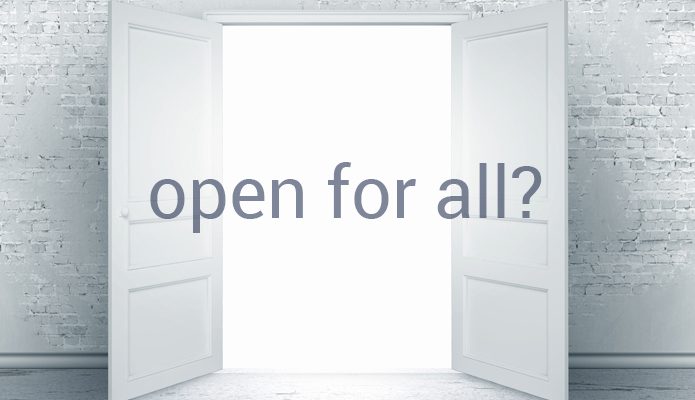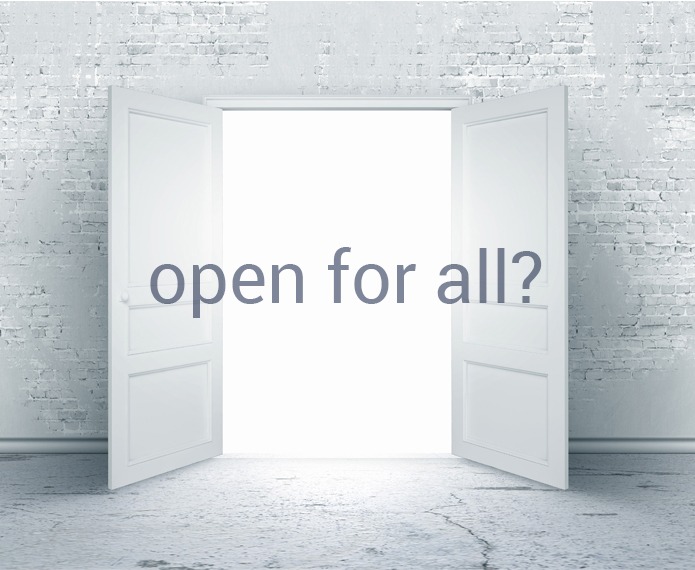The thinking of Comrade F. Dobler from the early 20th century remains relevant and even prescient: those who need open access to information may be those who are fundamentally excluded from public libraries.

Prioritizing Library Services For Those With the Greatest Needs
One of the critical findings of Open to All? The Public Library and Social Exclusion (2000) was that people who use public libraries the most need them the least; and people who need them the most, use them the least. Reversing this paradigm is the challenge that we face in transforming public libraries from Traditional to Community-Led and Needs-Based. Community needs are at the heart of this challenge – how to identify them in the first place, next put them into some kind of order of priority order, and then deliver services to meet them.
Community Needs: Marx
Everyone has needs and we all have different needs, so how can we identify and prioritize community needs? One approach could be to apply Karl Marx’s maxim of ‘From each according to his ability, to each according to his needs.’ The principle refers to free access and distribution of goods and services. In the Marxist view, such an arrangement will be made possible by the abundance of goods and services that a developed communist system will produce; the idea is that, with the full development of socialism and unfettered productive forces, there will be enough to satisfy everyone’s needs.
If we translate this thinking into public libraries we can interpret ‘from each according to his ability’ as every citizen (including library workers and patrons) will make his or her particular contribution to the activities of the public library according to his or her individual strengths (capacity and talents). In this model public library services are co-produced (from planning and design, through to delivery and evaluation) by the public library and the community working together in partnership, to share their strengths (capacity and talents). In doing so, all community needs would be met, with priority given to those with the greatest needs.
Community Needs: Maslow
Another approach could be to use Abraham Maslow’s hierarchy of needs. Maslow described human needs as ordered in a hierarchy – a lower level need would have to be mostly satisfied before someone would give their attention to the next highest need.
At the bottom of the hierarchy are the Physiological needs of a human being: food, water, sleep. The next level is Safety needs: security, order, and stability. The third level of need is Belonging, is a psychological need. The fourth level, Esteem, is the need to be competent and recognized, such as through status and level of success. The fifth level, Cognitive, is where individuals intellectually stimulate themselves and explore. The sixth level, Aesthetic, is the need for harmony, order and beauty. The seventh and highest level need is Actualization which occurs when individuals reach a state of harmony and understanding because they are engaged in achieving their full potential.
The first four levels – Physiological, Safety, Belonging, Esteem – are known as Deficit needs or D-needs. This means that if you do not have enough of one of those four needs, you will have the feeling that you need to get it. But when you do get them, then you feel content. These needs alone are not motivating. Maslow suggested that there are certain conditions that must be fulfilled in order for the Deficit needs to be satisfied. For example, freedom of speech, freedom to express oneself, and freedom to seek new information are a few of the prerequisites. Any blockages of these freedoms could prevent the satisfaction of the Deficit needs.
If we translate this concept into public libraries we can interpret the public library as playing a role in meeting all of these different levels of needs, from the Physiological needs, right up to the need for Actualization.
Community Needs: The Community-Led Library
The Traditional Public library has historically focused on meeting the higher level needs – the Cognitive, Aesthetic and Actualization needs. The Traditional public library has not been so focused on meeting the Deficit needs – the Physiological, Safety, Belonging and Esteem needs. Yet, as Maslow pointed out, until these needs are met, people cannot move up the hierarchy to meet their higher level needs. This helps to explain why Traditional public libraries are only actively used by 20% of the community – because they focus on meeting the needs of those people whose Deficit meets have already been met.
The Community-Led library focuses on potential or lapsed users, who make up 40% of the community, and who have a mix of Deficit and higher level needs.
The Needs-Based library focuses on non users, who account for another 40% of the community, and whose Deficit needs have not been met. The Needs Based library can meet Physiological and Safety needs by working in partnership with organizations which provide food and shelter. The Needs-Based library can also directly employ outreach and community development workers and social workers who focus on those with the greatest needs.
At the Belonging and Esteem levels the Needs-Based library can help to make people feel a part of the local community by providing democratic public space and becoming the living room of the community. The Needs-Based library can also provide some of the conditions that must be fulfilled in order for the Deficit needs to be satisfied, such as freedom of speech, freedom to express oneself, and freedom to seek new information.
Public libraries have a long history of enabling people to meet their higher level needs. By focusing on meeting Deficit needs, the Needs-Based library can prioritize those with the greatest needs, while at the same time increasing levels of library usage from 20% to 80% or more, and repositioning public libraries as agencies of social change.
John Pateman is the CEO / Chief Librarian of the Thunder Bay Public Library. The Open for All? column explores the nature of libraries and their commitment to openness.
